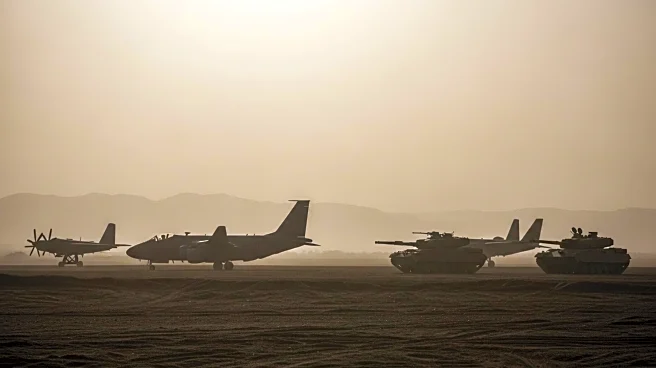What is the story about?
What's Happening?
A study utilizing satellite observations has identified persistent combustion sources near U.S. military operations in Iraq and Afghanistan from 2002 to 2012. The research highlights the use of burn pits and other combustion activities, with Iraq showing a higher number of fires due to industrial sources like oil and gas flaring. The study found that 65% of bases in Iraq had fire clusters within 5 km, while Afghanistan had fewer fires and less tightly formed clusters. The data suggests that fires near bases were lower in intensity compared to regional fires, indicating localized combustion activities.
Why It's Important?
The findings are significant for understanding the environmental and health impacts of military operations in conflict zones. Burn pits have been linked to health issues among veterans, and this study provides evidence of widespread combustion activities near military bases. The data can inform policy decisions regarding waste management and environmental protection in military operations. Additionally, the study highlights the need for improved infrastructure to reduce reliance on open-air burning, which poses risks to both military personnel and local populations.
What's Next?
The study's results may prompt further investigations into the health effects of exposure to combustion sources near military bases. Policymakers could consider implementing stricter regulations on waste disposal and combustion activities to mitigate environmental and health impacts. The research also underscores the importance of developing alternative waste management solutions to reduce reliance on burn pits.
Beyond the Headlines
The study raises ethical considerations regarding the environmental footprint of military operations and the responsibility to protect both military personnel and local communities from harmful exposures. It also highlights the challenges of balancing operational needs with environmental sustainability in conflict zones.
AI Generated Content
Do you find this article useful?
















